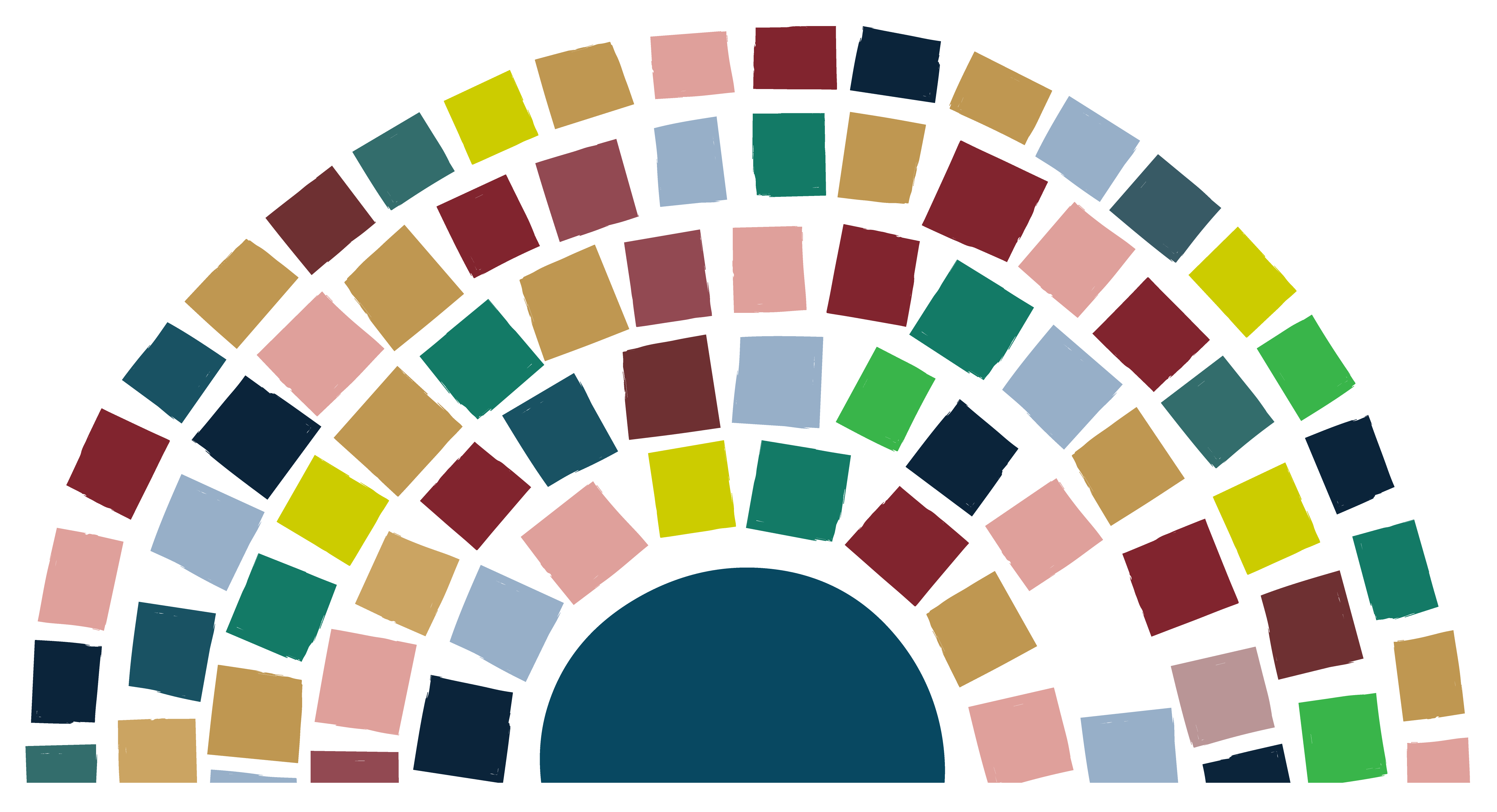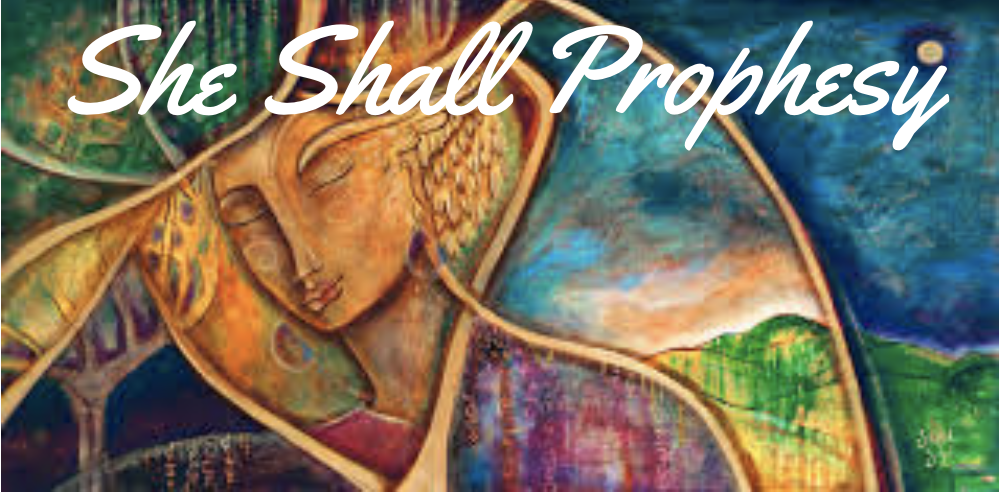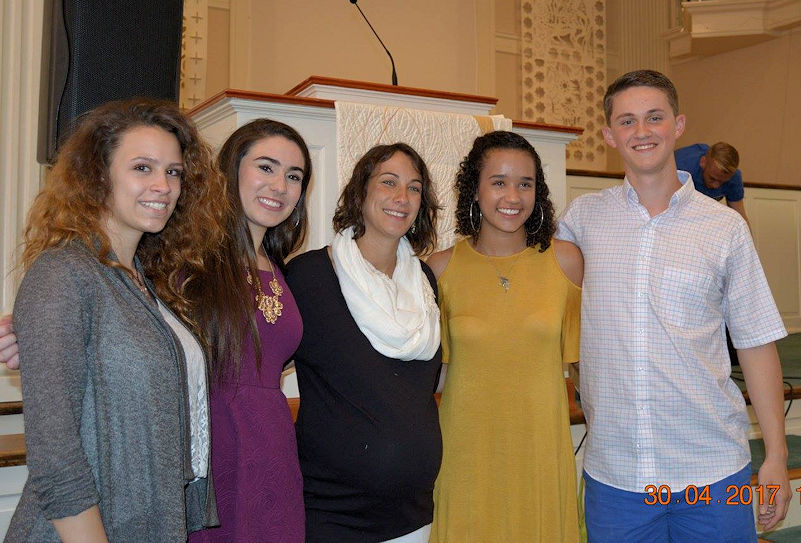What Concern Is That To You And Me?
by Kari Baumann
John 2.1-11, NRSV
What are some of your memories or stories with water? We could probably spend hours sharing with one another, whether you were talking about lazy afternoons by the pool or an ocean, injuries sustained when slipping on ice, the way that a cold drink of water in the middle of the night tastes better than water at any other time. We might talk about the rising waters of Katrina in New Orleans after the levees broke, or the tears we cried after a heartbreak, or a hot shower after a hard day’s work. We could remember segregated water fountains, and polluted rivers, but also beautiful waterfalls we hiked to see. While I am not a particularly good swimmer and the one time I tried to water ski I forgot to let go and got dragged behind the boat, I do love being by the water. I will camp out all day at the beach or by the pool with a book. I try to go and visit Hamilton Lake every single day, and snap a picture of the sky reflected in the water. When I visit, I feel calm and grounded. Water can be restful and active; water can be dangerous and also lifegiving. When we begin to think about water, we realize how present and active it is in our daily lives.
The Standing Rock protests brought the phrase “water is life” to our national attention, something that our Indigenous communities have been trying to tell us for many years. Even before those protests took place, there were certain Native cultures, like the Potawatomi who originally stewarded the land around the Great Lakes, where the women are known as water protectors. Potawatomi author Kaitlin Curtice says that those women, like her, know that the water that runs through our bodies is connected to the sacred waters that give life and sustenance to the lands around us. They pray and practice water ceremonies to protect the water from pollution and so our children inherit something better.
In the Caldecott-medal winning picture book We Are Water Protectors, the main character, an Ojibwe girl, is told by her grandmother, “We come from water. Water is sacred. Water is alive. Water remembers our ancestors who came before us.”
This is how we talk about elements of Christianity, as well. The dust that we use on Ash Wednesday that is connected to the stardust of all creation, and that Jesus may have walked upon. The wine that we drink at communion that asks us to remember Jesus’ life and what he taught us. The wood of our altar table that comes from the majesty of God’s created trees. We are reminded that the objects we use actually come from somewhere and connect us not only with God but with one another. Throughout our scripture and in our everyday lives, God meets us in the created world, and even in everyday words of love that we might call our daily liturgy.
In today’s story, featured only in the book of John, water is the primary element, at least before Jesus gets his hands on it. Water is present as Jesus performs what is his first recorded miracle, turning that water into wine at a wedding. When the wine runs out, Mary turns to Jesus and pointedly mentions, “They have no wine.”
How does Mary even know this? The steward, we see later in the story, is not aware. The people getting married do not appear to know. Was Mary talking to the servants? If so, why? Is she simply someone who pays attention? If this is Jesus’ first sign, then how did Mary have such confidence? What did she think or imagine would happen? And why did she believe that? Mary almost seems to be a liminal figure here, somehow between the wedding party and the servants, in neither group. I am inspired by Mary’s holy imagination.
What concern is that to you and me, Jesus asked, and I like this extremely relatable human interaction between mother and son. Mary does not even dignify this question with a response. Is this because she knows that she has taught him better than that? Is he simply teasing her? Does he think he’s grown, talking to his mother like that? Mary, the wisest of mothers, does not take the bait.
A brief prayer for all parents: Lord, help us remember not to take the bait!
Instead, Mary ignores the question and instead starts talking to the servants, saying, “Do what he tells you to do.” Was Jesus’ mind changed by what his mother said? It is impossible to know. There are other instances in our gospels where Jesus’ mind appears to be changed by a woman who has a different perspective, such as the Syrophoenician woman who seems to change Jesus’ mind about who he was on earth to help. This might also be one. Or perhaps Mary simply nudged Jesus to act, refusing to let the moment pass. People need help, and I am pretty sure you can help them.
And she’s right. He does help them. He turns the water into the best possible wine. The steward is amazed! The party goes on uninterrupted! Presumably, Mary is satisfied.
In our scripture, water stories often represent a new beginning or some kind of change. In Genesis, “In the beginning when God created the heavens and the earth, the earth was a formless void and darkness covered the face of the deep, while a wind from God swept over the face of the waters.” Jesus talks later in his ministry about “living water,” contrasting it with the water we drink. Moses parts the Red Sea, leading the Israelites out of enslavement into freedom. Jesus is baptized in the Jordan River, signifying the beginning of his ministry. In the story of Noah, the world must be rebuilt after a flood. Jesus also has other miracles related to water that show the disciples who he is, when he walks on water, and when he calms a storm.
But this story, only told in John, is said to be the first. When someone is baptized here at College Park, we in the congregation proclaim, “We are a people of the water. We worship a God whose love flows through water.” Here is a prime example. Love flowing through water and even into wine.
Who was this sign for, this glory revealed to? It’s not the bride and groom, not even the steward, none of whom seem to know about the miracle. None of the people who are important at this event seem to know anything about what happened. The only witnesses are the servants and the disciples. And of course, Mary. This is what she said would happen when Jesus was born, that the lowly would be lifted up and the hungry would be filled. In this case, the regular people were given something lovely, a beautiful and abundant gift. The first people who knew about it were not powerful or impressive by the world’s standards. What kind of God is this, who reveals glory first to servants and friends at a wedding in a small town?
In our society, a fear of scarcity distorts our reality. We grasp tightly to what we believe we own, or what we believe we deserve. We use up what God has given to us. And Jesus here, despite his protestations, shows us another way. With his actions, he answers his own question: What concern is that to you and me? It is my concern, and your concern, because we belong to one another.
What concern are those hungry kids across town or on the other side of the world, or the people who use our needle exchange clinic, or the people who need to access healthcare, or the people being affected by climate change? What concern are people who have to flee their countries because of war and abuse and natural disaster? What concern is it of ours if water and sacred lands are being destroyed elsewhere? As Fannie Lou Hamer famously said, “Nobody’s free until everybody’s free.” It is our concern and our opportunity to participate in the glory of God in the world.
We cannot and should not feel the pressure to solve every problem we see, especially not with the information overload available to us, but we, as followers of Jesus, have the ability, the eyes and ears and the nudging of the Holy Spirit to live in a way that we notice where we can help. These are our concerns because we belong to one another, because Jesus demonstrated that concern even on small occasions. We are given the gift of seeing that care and concern as a sign that Jesus is present and moving in the world. Jesus’ message is living and active today. We can be like Mary, nudging, cajoling, and that our actions can help God move in the world.
Throughout the scripture, we see Jesus choosing not to leave people in the same condition in which he found them. In this story, the needs of the world are directly answered with the abundant love and provision of God. It does lead us to ask the very natural question, “Why are so many left without wine?” by which we mean, clean water, healthcare, housing, education, or even general safety.
In response, I would ask the question, are we to be the people who help facilitate this abundance? Can we be Mary, constantly voicing the concerns of the people to God in confidence that God will make it right? Can we as followers of Jesus be part of changing the conditions of the people we encounter? Can we bring healing into the world? Can we participate in the glory of God?
Listen to Mary, preaching to us, now: Do what he tells you. This is actually not the message that we sometimes give our kids, “Do as I say, not as I do.” Throughout the gospels, Jesus gives us the example in his words and his actions, showing a God who heals and feeds, and a God who reminds us to look for God’s presence in the everyday.
Theologian Wil Gafney says, Mary “tells her God-born son that it is time for him to live into who he is publicly as only mothers can do. And for those around her who do not yet know who her Son is, she preaches a powerfully simple sermon that we would do well to heed ourselves, “Do what he tells you to do.” Do what he tells you to do. Is there any finer sermon that gets to the heart of what we are called to as Christians?”
In her book Still: Notes on a Mid-Faith Crisis, Lauren Winner talks about “dislocated exegesis,” and what it means to tie our scripture to the actual places around us. She describes reading scripture about healing in an oncology unit of the hospital, and reading on an airplane about God lifting us up on the wings of eagles, and reading about liberation and love in front of an ICE detention center. What would it mean to read about God’s glory in some space that’s not a church sanctuary? In terms of water, I think it would look like Fannie Lou Hamer’s tears as she testified powerfully in front of Congress about the cruelty of segregation and the beatings she experienced. It looks like the persistent witness and activism of Little Miss Flint, Mari Copeny, who advocates for clean drinking water all over the world, starting in her hometown of Flint, Michigan. It looks like the people of World Central Kitchen who show up and hand food and drink to people in the middle of a disaster, like millions fleeing Ukraine.
How was Jesus’ glory revealed? The glory was revealed not to an adoring crowd of followers or in front of powerful leaders. Jesus’ glory was revealed to servants and friends when he cared about the problem in front of him and knew (because his mother reminded him?) that he could help. This is a beautifully human story that we can follow and demonstrate that Jesus’ question is still being answered today, through us. Jesus’ glory is still being revealed today, through our actions. What concern is it of mine, Jesus asks, and then gives us the opportunity to live our lives in such a way to participate and follow a God who is with us. We follow an incarnate God who is invested in human concerns, human relationships, and human interactions with our created world. Here is our opportunity to go and do what he tells us.


